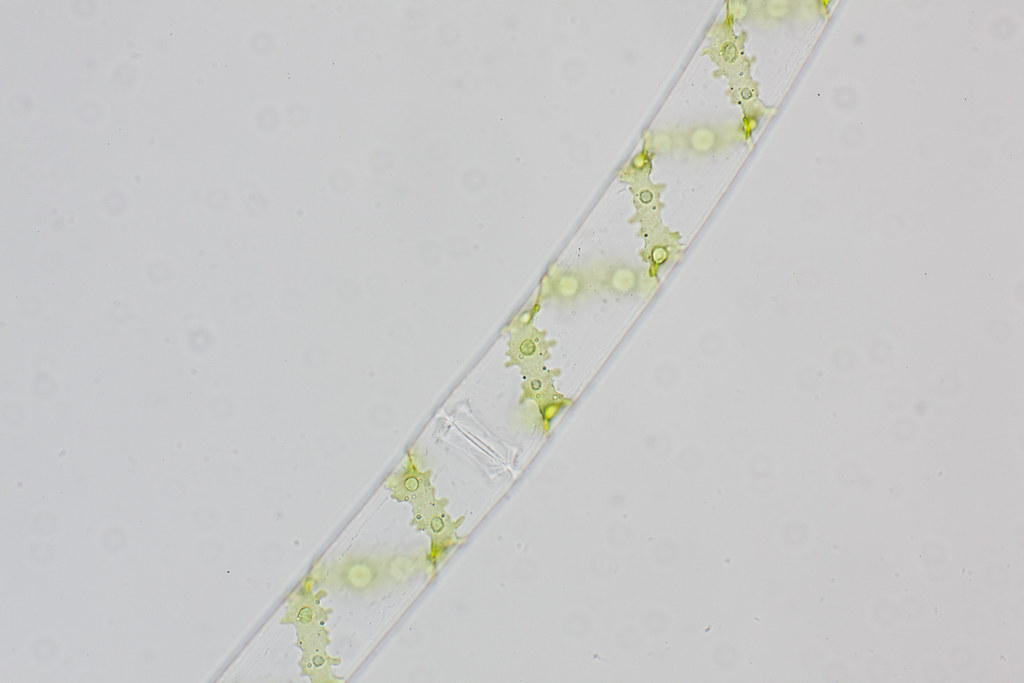Page 1 of 1
Questions from our town's old reservoir
Posted: Mon May 29, 2017 5:26 am
by JuiceKing
Went fishing with my son this morning, and before we left, we got some samples for later, and now we have lots of questions!

This is Spirogyra, correct? Can you identify the species? It's from the edge of a freshwater pond in New England.
Interestingly, inside the filament I see many small moving creatures; they are just black dots at this magnification. See the video below. Can you tell me what they are?\
From this same sample, I also found this Daphnia. Can you confirm that it's Daphnia pulex?
These smaller microbes moved in close to the Daphnia's head later on. They had hoop-like filaments that seemed to rapidly rotate around them, but that must be an illusion. Can you tell me what they are?
Many thanks!
Re: Questions from our town's old reservoir
Posted: Mon May 29, 2017 5:50 am
by admin
Hello,
first of all, great pictures.
Microscopy alone often does not provide enough information to identify something down to the species level. And: due to the large number of yet unclassified microorganisms, it is not even unlikely that you are dealing with a new species. The typical spiral shape of the chloroplast allows it to locate to the genus
Spirogyra, I do not know if it is possible to go further into detail.
Interestingly, inside the filament I see many small moving creatures; they are just black dots at this magnification. See the video below. Can you tell me what they are?
These are cell organelles. There are 2 reasons why they move:
a. Brownian motion
and/or
b. cytoplasmic streaming.
Oliver
Re: Questions from our town's old reservoir
Posted: Mon May 29, 2017 6:18 am
by actinophrys
Agreed, very nice images. I will second about what was said about Spirogyra; most species seem to be distinguished at least in part by the shape of zygospores, which are only produced during conjugation between filaments.
The water flea is not actually Daphnia pulex, but a close relative in the same family, Simocephalus. You can tell because of the much steeper forehead and truncated posterior, whereas Daphnia have a tail spine except in newly hatched individuals. In my experience this kind is more common in and around debris.
The little cells on them are peritrich ciliates, possibly Rhabdostyla which are common on crustaceans. There is a ring of cilia around the mouth, and when they split or detach from their stalk they also develop a second ring near the other end. These beat in waves that appear to rotate around the cell, since the individual cilia making them up are too fine to follow.
Re: Questions from our town's old reservoir
Posted: Mon May 29, 2017 11:17 am
by 75RR
A productive sample and very nice images from it.
Here is a link that will let you have some fun attempting to identify Cladocera
http://cfb.unh.edu/cfbkey/html/choices/ ... 11/11.html
and a link to a Water Flea scientific classification diagram
viewtopic.php?f=18&t=4908
Re: Questions from our town's old reservoir
Posted: Mon May 29, 2017 3:34 pm
by JuiceKing
Thank you, Oliver, actinophrys, and 75RR for your responses! I've fixed up my annotations in my Flickr postings. This is terrific.
Re: Questions from our town's old reservoir
Posted: Tue May 30, 2017 5:30 pm
by vasselle
Bonjour.
Très beau travail
Cordialement seb
Re: Questions from our town's old reservoir
Posted: Tue Jun 06, 2017 9:08 pm
by Cyclops
Very nice set of videos!

